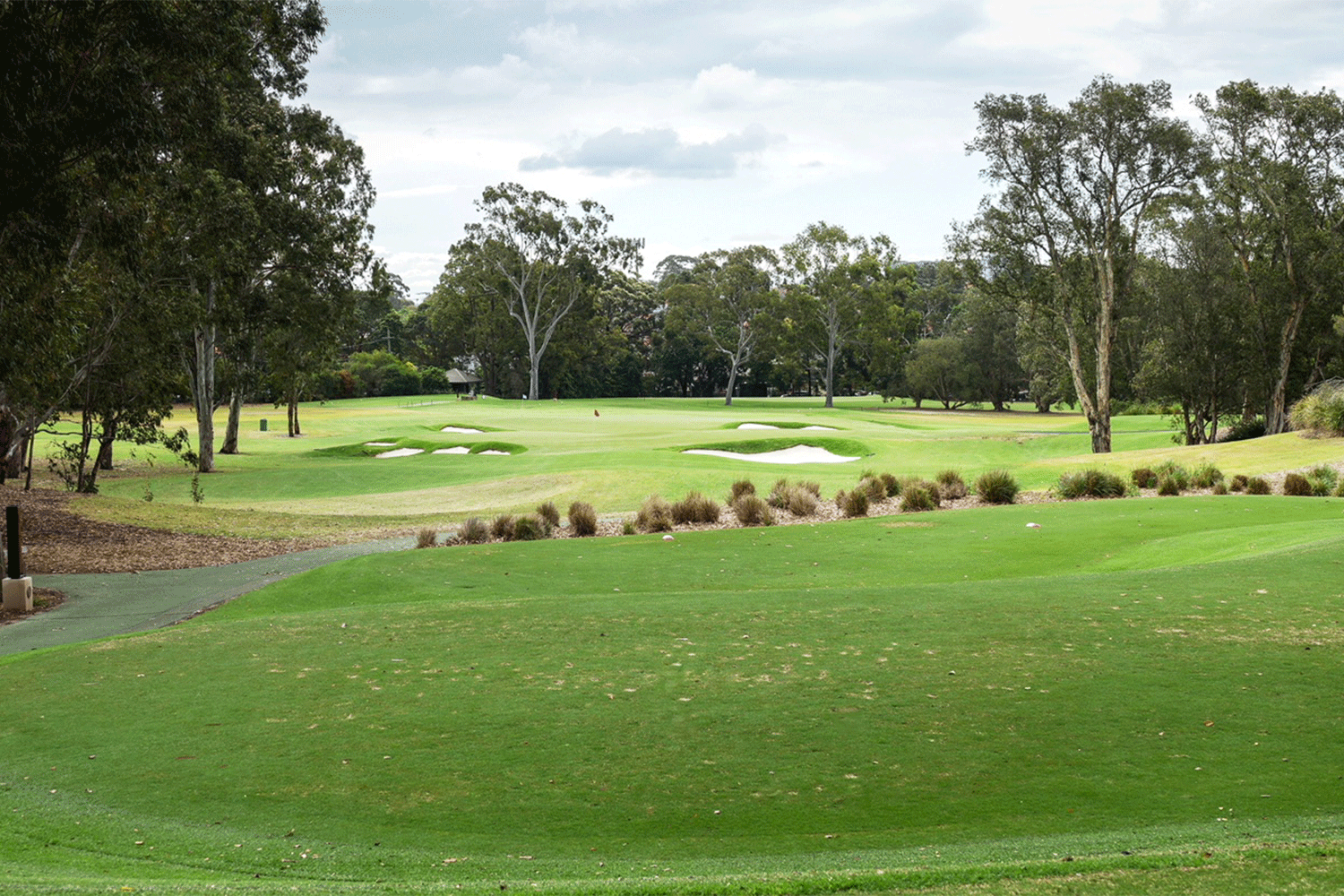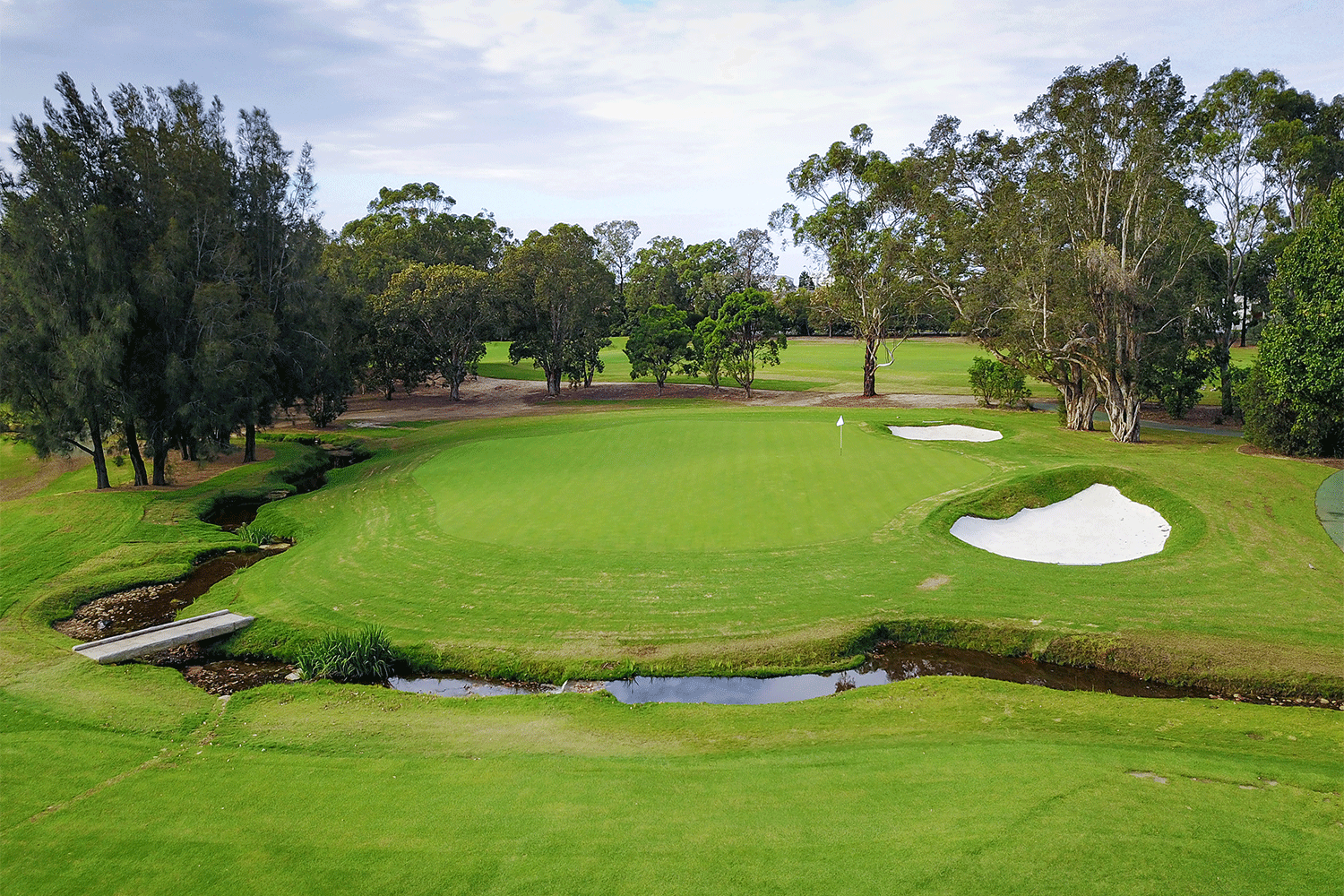The old layout at Concord Golf Club was a little like the quiet accountant who toils away in the corner office at your workplace: ruthlessly efficient but lacking a sizeable dose of charisma.
Originally designed by Dan Soutar in 1916 and altered late last century by Ross Watson, Concord was a relentlessly solid golf course hemmed in by suburbia. It became known to many courtesy of ongoing tournament exposure either side of the new millennium. The course also carried a deserved reputation for immaculate presentation and a level of conditioning that made it the envy of Sydney clubs. But time and tinkering had taken away its soul.
That changed when the popular American course architect Tom Doak strode into town. Flamboyant and artistic in his design approach, Doak is known for his broad, cerebral layouts that flow across open, unrestricted pieces of uncontrived land. At Concord, he was served up almost the opposite. It was an entirely different canvas to throw paint upon.
![From the 14th tee, the 12th green appears to slide off the rear of the 14th green [right], just one Doak optical illusion at Concord.](http://australiangolfdigest.com.au/wp-content/uploads/2018/12/Concord_Golf_Club_01.gif)
In a $4.5 million redesign performed nine holes at a time to a demanding, seven-month timeline between September 2017 and April this year, Concord Golf Club lost some trees, gained others and saw all 18 green complexes and the 69 bunkers rebuilt along with some fairway reshaping. New irrigation and drainage works were also incorporated. The overall look is different, but the focal point of the work undertaken by Doak and design associate Brian Slawnik took place closest to the flags.

Structurally the only two alterations to the layout, after minor in-house redesign work nine years ago, was the split of the old fifth hole from a long, dogleg-right par 5 into a short par 4 and a long par 3, plus the reunion of the par-3 seventh hole and par-4 eighth into the par 5 that it was for so many years. The first move took place partly to address boundary issues off the tee on the fifth when played as a par 5; the latter gave back a par 5 and turned a pair of so-so holes into one far stronger one. This new combination retains memories of the previous incarnation of this corner of the land while forging a new identity. The new-look fifth is likely to take the driver out of many golfers’ hands due to the iron-then-pitch-style short par 4, although some big hitters may be tempted to carry the corner bunkers with their tee shot and find the open pastures nearer the green. Meanwhile, the eighth is a familiar return to a three-shotter – just without the claustrophobic entrance to the green, which was formerly suffocated by too-tight treelines.
And that, in many ways, is emblematic of the entire re-do. Concord lost 175 trees (in a one-for-one agreement, more than 200 others were strategically planted elsewhere on the property) as overall the whole place breathes a lot more with far fewer arboreal intrusions.
But Concord 4.0 is not all about the trees. In fact, it’s mostly not about the trees. Instead, it’s about where the trees aren’t and where the greens are. Some greens are far larger than before, others a touch smaller. Both subtle and overt contours define the collective 18 in what is a far more interesting set of putting surfaces.

Part of that new interest stems from the clever approach to the surrounds. Hugging parts of all greens are couch-grass fringes, which create so many more options around each one. Golfers can now bounce their iron, pitch and chip shots onto the greens far more than in the past when so many approach shots and greenside plays simply had to take the aerial route due to the green designs and the unpredictable kikuyu surrounds. And by linking the fairways with short-cut kikuyu turf, Concord’s fairways have grown by six hectares. To offset the additional maintenance and water usage to cut and irrigate the kikuyu, the club is overgrowing kikuyu rough and tee-to-fairway areas with couch, which requires less mowing and water. The colour contrast will be prevalent, particularly in winter when the couch turns dormant.
The result is a course that is more interesting and more playable, which pleased the membership – 85 percent of whom voted for the Doak project to go ahead.

“Now ninety-five percent of members are happy. Even members who didn’t vote for it have come to me and said, ‘I didn’t know who Doak was, but this is fantastic,’” says Ross Haron, the chairman of Concord’s upgrade committee and club captain during the project.
“Now ninety-five percent of members are happy. Even members who didn’t vote for it have come to me and said, ‘I didn’t know who Doak was, but this is fantastic,’” – Ross Haron
The club feels it has achieved its aim, which is the aim of almost any club in its position: keep the course challenging for good players and still manageable for lesser golfers. The easiest – and smartest – way to realise that is by making the course more playable from tee to green and more exacting closer to the hole. The judicious clearing has the treelines between fairways playing far less penal than before, with distance now more achievable from within the stands of trees. The trade-off is that a premium has been placed on placing the ball in the correct portion of the reworked greens.
And in an age when length is the main criteria for a high Slope rating, Concord reduced its overall length by 200 metres to a 6,110-metre black course. This is mainly due to the expansion of the greens being mostly towards the tee. However, as Haron notes, if the course were played with all flags at the rear of the greens, the total distance on the old and new courses would be similar. Yet with all front pins, the new version would be 200 metres shorter but vastly more strategic.
“Members are re-learning their course and enjoying the challenge of the greens,” Haron says. “And more people are in the game.”
Elsewhere, Doak’s bunkering is smarter, with a trio of attractive bunkerless greens at the par-4 second, fifth and seventh holes. The bunkering shortcomings of the closing hole, where avoiding the fairway traps formerly yielded the best angle into the green, have also been addressed. Golfers now need to challenge the sand off the 18th tee in order to improve their line into the punchbowl-style green. And overall the bunkering is not only more purposeful, it is more attractive. Several of the high-lipped pots feature shaggy ‘eyebrows’ where the kikuyu has been left to grow on the high side of the lips. It looks cool and adds definition but some balls sticking in the longer grass will be difficult to build a stance to extricate.
Not every change at Concord Golf Club will be evident at first glance. That’s because the routing is almost identical and many of the subtleties become evident only once a hole is completed or possibly after several playings. Yet look again and the improvements reveal themselves. Optical illusions abound, including the way the 12th green appears to flow off the back of the green of the downhill par-3 14th, when in reality there is ample space between the two. Doak’s artistry is evident even if it is at times understated and restrained.
So remove those coloured biros from your shirt pocket. Concord now has character to match its charm.
THE DETAILS
Concord Golf Club
Where: Majors Bay Rd, Concord NSW 2137
Phone: (02) 9743 6111




